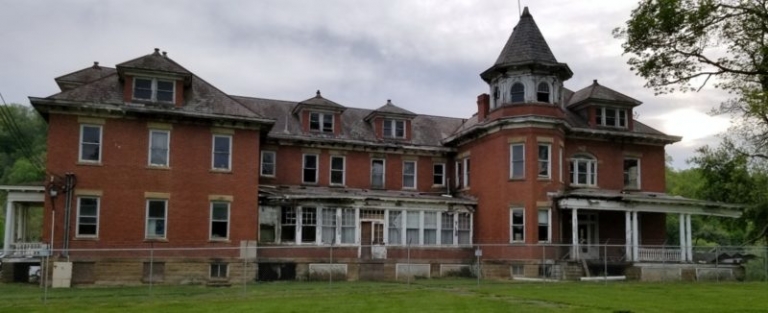
In the midst of a scenic valley, on the edge of a county fairground, it waits empty, looking out across broad pastures. Some say it's eerie. Some, breath-taking. It's the defining image for many travelers who visit rural Tyler County for the first time.
State officials say it belongs on the National Register of Historic Places, and some heritage-tourism experts consider it one of the most iconic structures in the state. But members of the county commission aren't convinced it can be fixed after years of neglect.
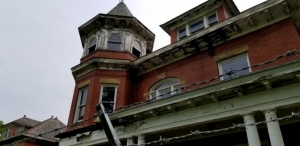
There are more state and federal funding opportunities for renovations, however. New grant opportunities could cover more than 50 percent of the cost. And tax credits of up to 45 percent are available for investors in historic properties in West Virginia, thanks to new state and federal legislation. Even more, innovators are stacking credits to wipe out construction coasts.
But for now, some people worry the situation may not end well. The roof is leaking. The soffits are rotting. The structure and its brick-work are stable, but that won't last long.
"It's an absolutely incredible building—one of our prized possessions and a true landmark, worthy of preserving for the nation," said Anna Lynne Stasick, who assessed the landmark for the Preservation Alliance of West Virginia in 2009.
In 2009 Stasick she reported that the roof of the structure was in need of immediate repair, but that tarps could be used to prevent water damage until funding for repair was secured. Security measures were also needed to prevent vandalism, she said.
These measures could be accomplished for thousands of dollars, not millions, as with new construction, she said.
As a result of the years of neglect, which appears to have commenced in the 1960s, the alliance in 2009 listed the landmark as "Endangered" and has made itself available to the county as a consultant.
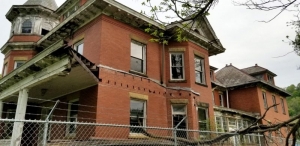
But what of the building? In recent years it had been called "the Crazy House," a local name that's hardly accurate. It was a poorhouse, and it was one of the best and most ornate examples in West Virginia. It is also one of few that remain.
Poorhouses, or workhouses, were government-run facilities, usually managed by counties or municipalities, that supported and provided housing for the needy and dependent. Many thousands were located across the U.S. and in Wales, Ireland, and England.
Often they situated on the grounds of a poor farm, on which able-bodied residents were required to work. Such farms were common in the U.S. in the 19th and early 20th centuries but declined after the Social Security Act took effect in 1935, and most had disappeared by about 1950.
Built of red brick, wrapped in ornate woodwork, it rambles across a lawn in two large winged sections that include a tower, solariums, bay-windows, elaborate porches, and fanciful roof-line. It was designed to impress visitors passing through the county seat from the east, as it does today, though its disheveled aspect is less impressive, though not so noticeable at a distance.
The “Poor Farm,” “Poor House,” or County Home, was built early in 1915, and, according to the alliance's report, along with the adjacent Pauper's Cemetery, it "is a testament to the poor and forgotten disadvantaged who struggled to help build this county and state."
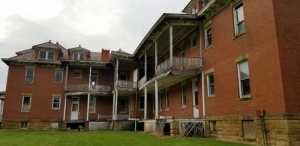
In her assessment, Stasick pointed out that the commission's financial problems had actually helped save the building.
"The county has had insufficient funds to maintain the building, and it has slowly deteriorated," she wrote in the assessment. "Fortunately, lack of funds has also prevented the county from demolishing the building."
Demolition can be hazardous and expensive, and it requires land-filling, she noted.
County officials since have met with construction companies that have proposed more expensive costs and alternatives, whereas Stasick's original proposal was to practically fix the building and secure it for future use.
What might be done with the structure—beyond exploiting its value as a showplace and tourist attraction? Some say the county should lease the building and let the market dictate its use.
In the 1980s, a group of local volunteers proposed that it be made a museum. However, the county declined the museum board, and the museum was opened nearby in an old school in Middlebourne.
Support for its preservation is substantial. The rescue effort has recently enjoyed significant aide, according to Peggy Sue George, who raised $29,795 in less than two years to replace the building's compromised windows, though when she alerted the county that the funds for new windows had been raised, the county retracted its offer to accept the funds or use them for window replacement.
Ironically the commission in denying the window-replacement funds helped maintained the integrity of the building, which would have been compromised by the installation of new windows over the practicality and integrity of fixing the old.
Read also: Heritage tourism economic engine for W.Va.; New fund offsets cost for development of historic properties
Through the years, many potential uses have been proposed for the building. The museum could finally be reopened there or an art gallery might be installed.
A museum that recounts the history of the adjacent speedway could be featured, or the building could be home for a trade school, a veterans center, or mental-health counseling center. The country might make money off leasing the space to gas developers.
"The building is large enough to accommodate all of this as a county community center."
Agritourism initiatives could also be used to draw commerce and tourism to Tyler County, which ranks far behind other West Virginia counties in such economic-development measures.
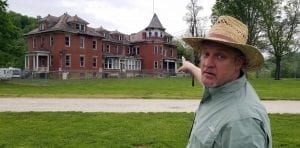
George said she had heard that the commission had also sought out the assistance of the DIY channel's series Salvage Dawgs to demolish the building, but the network has so far declined to return calls about the matter.
County commission officials declined to speak about the matter.
How bad off is the building? What follows is the full 2009 assessment performed by the Preservation Alliance of West Virginia, which recommended that a structural engineer with a knowledge of the particulars of nationally important structures be followed.
Building Security: It was suggested by Revitalization President Karen Mercer that the number-one priority is to secure the building from human intrusion. This is true. Unwanted people have found their way inside the building and have done some damage, although not a great deal, as of yet, but the chance of future vandalism, and most especially fire, is very real. In order to remedy this, all accessible windows, doors, and basement entrances should be boarded up or in some other way be secured as to prevent further intrusion and vandalism. This could be completed at a relatively low cost and with little or no damage to the existing window and door frames.
Roofs: All roofs on this structure are in need of both immediate attention for stabilization purposes. The roofing system is composed of a combination of slate and tin. In many areas, the slate is intact and in fairly good condition. It is the hope of at least one member of Tyler Revitalization that much of it can be saved. That evaluation, however, will have to be left to a professional roofer knowledgeable in historic roofing practices, but much of it does seem salvageable. There are areas, however, where sections of slate are completely missing thus exposing the sheathing. In order to prevent further water intrusion through those areas it is suggested that in the immediate future, tarps or some other form of protection be purchased and secured in place until a permanent solution can be affected. All of the tin roofs, valleys, and chimney flashings will most definitely need to be replaced.
Box Gutters, Porches, and Stairs: The biggest and arguably greatest contributor to the deterioration of the building’s wood fabric is the terribly poor condition of the box gutters and downspouts. Because of severe leakage, joist ends are rotting on the main building and soffit is falling or has completely fallen off taking with it some of the decorative modillions attached to it. Porch ceilings are damaged or in danger of failure, and on one ground-floor porch, the floor has rotted and collapsed in the corner to the extent that the posts have completely fallen in. Where downspouts are leaking or missing altogether, water has moderately damaged the brick mortar. Water striking the ground and splashing upward has caused moderate deterioration to some of the foundation stones. Some soffit and fascia appear sound, but a good deal of the soffit is missing or hanging loose. All box gutters will need rebuilding and re-lining and all downspouts will need replacing. A matter of great and most immediate concern, however, is the condition of the two-tiered porches located at the rear of the building. If something is not done in the near future to stabilize them, there is an imminent danger of losing valuable historic structure when they collapse. This would not only be unfortunate but would also prove very costly. The suggestion here is to construct some temporary supports to secure both the roofs and the second story porch floors. This can be affected through the use of framing material staked to the ground to form a secure base and angled up and secured under the porch roof overhangs. A row could then be installed under the band-boards on the second-floor porches. The posts and railings could then be removed and stored for later rehabilitation. This would take the stress off both the ground-floor and second-floor porches while stabilizing the porch roofs until permanent solutions can be implemented. Once again, this could be done at a relatively moderate cost. It is also suggested that this area be securely cordoned off as soon as possible to prevent both future vandalism and the possibility of injury. All exterior staircases are either in need of repair or a complete replacement, although some are quite simple in design.
Windows: It is highly recommended that the original windows and frames in this structure be maintained, as they qualify under three of the five criteria indicated in the guidelines set forth by the U.S. Department of Interior for the preservation of historic buildings. The relevant criteria require that they be original, that they reflect the original design intent for the building, and that they reflect period or regional styles or building practices (National Park Service Preservation Brief No. 9). All three apply in this case. The main structure has one-over-one, double-hung sash type windows, but there are a variety of other types throughout the building, including nine-over-one double-hung sashes in the breezeway and twelve-over-one curved double-hung sashes in the towers as well as smaller windows of varying types scattered about the building. There is also a small amount of cut glass. For the most part, the windows in the main structure are in remarkably good shape given the conditions they have been subjected to over the years. A cursory look at several indicates very little if any visible signs of rot in the window jambs, sashes, muntins, stops, and sills. However, there are issues with some of the tower and breezeway windows as well as some of the smaller windows. But, as of now, it is still likely that many of them can be saved.
Brick and Stone: Aside from some pointing issues caused by roofing, downspout, and gutter failure, the brick, stone, and mortar in this building are in remarkably good condition. There are some issues including movement in some of the stone window sills and other damage, and indeed some repair and re-pointing will be necessary, but overall, masonry repairs appear not to be a major problem. There are issues however with the chimneys. In one case, the top two courses of brick on one chimney, devoid of any mortar at all, are balanced precariously on one another and ready to fall. This example represents the worst-case condition, however. A number of the other chimneys appear much more stable.
Interior Ceilings and Walls: Ceilings and walls alike show signs of deterioration due to water intrusion and the lack of heat, but there are very few places where the damage has been severe enough to cause the brown coat to fall. This condition exists mostly around some of the windows, but it is also evident in several other areas as well. There is also ample evidence of efflorescence and skim-coat damage, but it appears that utilizing proper rehabilitation techniques, most of the plaster is salvageable at this point.
Doors and Window Interiors: The interior doors and jambs in the main structure are intact and in reasonably good condition as are the interiors of the window jambs, sills, sashes, and sash stops, although due to moisture, summer temperatures, and the lack of heat in the winter, the varnish has deteriorated and some of the wood is bleached, most especially regarding the windows. As described in the “Exterior Windows” section above, there are issues with the windows in the towers and breezeway as well as with other smaller windows scattered throughout the building, but most are presently salvageable.
Floors and Staircases: The floors and staircases are in relatively good shape, although there is some separation between the wall and the main staircase on the first-to-second-floor landing. In addition, some of the tongue and groove floors have buckled due to water infiltration and in one case boards were cut and removed, presumably to repair a leak or perhaps run some wire. The work was poorly done and will need attention. There are some other flooring issues including separation between the walls and floor in more than one room. In addition, ductwork, and water, sewer, and gas pipes were retrofitted to accommodate past renovations. Once again, interior rehabilitation will eliminate those problems.
Basement: The basement walls appear sound and there is very little water evident on the floor. The ceiling joists are in good condition. There is no viable electric service except for a large panel installed for use by the fairgrounds next door. The original steam heating unit is gone as are the radiators throughout the building. Smaller heating units were installed to accommodate renovations but they appear inoperable. Presumably, both water and gas have been disconnected.
Conclusion: It is apparent that first and foremost, the building needs to be secured, the largest of the holes in the roof covered temporarily, the two-tiered porches temporarily stabilized, and that area securely cordoned off. It is also suggested that any architectural components including downed porch posts, modillions, and other pieces be gathered and stored inside for the winter. There is really nothing to be done at present to address the leakage due to the box gutters and downspouts despite the severity of the situation. It is apparent, however, that problems with the roof, box gutters, and downspouts will all need to be addressed and permanent solutions implemented in the near future to prevent further damage and deterioration. Care and rehabilitation of the widows could result in windows and frames that are both historic and attractive, and along with other measures could be made more energy efficient. Some of those measures include the use of certain types of approved non-cellulose insulation, weather stripping, and the proper cleaning and subsequent caulking of exterior building joints. Rehabilitation is also the recommendation offered where possible for any and all exterior doors. There are some bricks and mortar issues, the most urgent being the chimneys. They can be repaired during the replacement of the roof and water drainage systems. It is recommended that the in-ground ceramic storm sewer drains be checked to ensure they are working properly to eliminate water at the foundation. It is also recommended that the French drains be renewed at the foundation and connected to storm sewer mains at various points around the building to prevent the possibility of water infiltration into the basement.






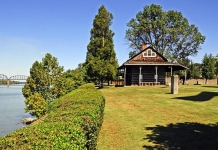
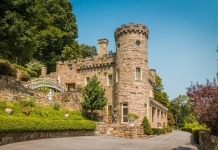
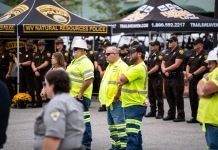
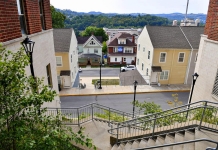
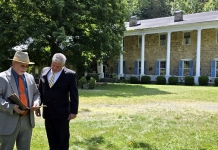
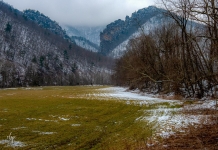



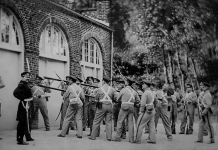
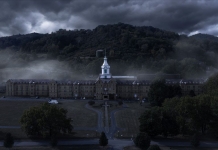







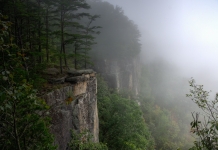




Facebook Comments